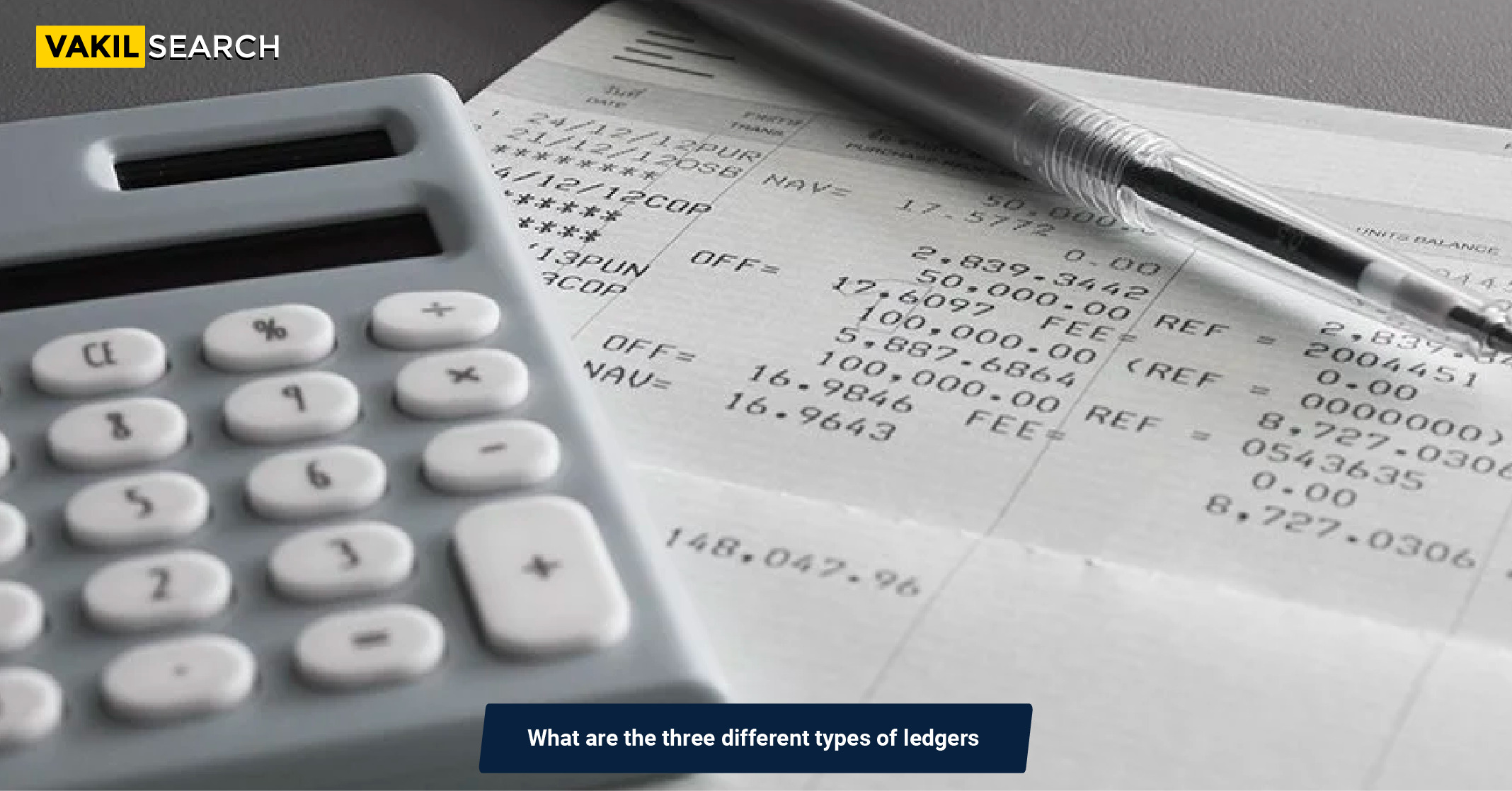In this guide, we delve into the world of financial ledgers - General, Sales, and Purchase. Understand their significance and how they function with examples.
In financial management, precision and accuracy are paramount, whether you’re tackling tax filings or crafting comprehensive financial statements. To maintain this precision, the accounting ledger book emerges as an indispensable tool, cataloguing your journal accounts in a systematic interplay of debits and credits. In the following sections, we will delve into the essence of the accounting ledger, types of ledgers elucidating its significance to businesses of all scales.
Accounting Ledger – An Overview
The term accounting ledger encompasses a pivotal concept in financial management. It signifies a meticulously maintained record where businesses archive all the requisite information indispensable for the formulation of comprehensive financial statements. Essentially, an accounting ledger book serves as the culmination of transactional data initially recorded in accounting journals.
It records entries by methodically categorising and summarising them into a coherent amalgamation of debits and credits. As this record orchestrates the meticulous repetition of data, it aptly earns the title of the second book of entry.’
Types of Ledgers
Let’s embark on this journey of discovery by examining each types of ledgers meticulously:
1. General Ledger
The General Ledger, often referred to as the GL,’ is the heart of financial accounting. Its role is paramount as it serves as the master ledger that records all financial transactions within an organisation. The General Ledger is akin to a canvas upon which a financial portrait of the business is painted.
Purpose of the General Ledger
The primary purpose of the General Ledger is to provide a comprehensive and organised record of all financial transactions. It serves as the foundation for the creation of financial statements, offering a holistic view of a company’s financial performance.
Contents of the General Ledger
The General Ledger houses a multitude of accounts that fall into several categories, including assets, liabilities, revenue, expenses, and equity. Each transaction recorded in the General Ledger contains the following elements:
- Date: The date when the transaction occurred
- Description: A brief description of the transaction
- Debit: The amount debited (subtracted) from an account
- Credit: The amount credited (added) to an account.
Let’s illustrate this with an example:
| Date | Description | Debit (₹) | Credit (₹) |
| 01/01/2023 | Sales Revenue | 10,000 | |
| 01/01/2023 | Office Supplies | 500 |
In this example, the first entry represents revenue earned from sales, debiting the Sales Revenue account with ₹10,000. The second entry accounts for office supplies purchased, crediting the Office Supplies account with ₹500.
2. Sales Ledger
The Sales Ledger, also known as the Debtors Ledger’ or Accounts Receivable Ledger,’ is a specialised ledger that focuses on customer transactions. It tracks sales made on credit, outstanding amounts receivable from customers, and payments received.
Purpose of the Sales Ledger
The primary purpose of the Sales Ledger is to provide a detailed record of all transactions related to sales and customer accounts. It helps in monitoring customer credit, managing outstanding invoices, and ensuring timely payments.
Contents of the Sales Ledger
The Sales Ledger comprises individual accounts for each customer or debtor. These accounts contain transaction details, including:
- Customer Name: The name of the customer or debtor
- Invoice Number: A unique identifier for each sale
- Sale Amount: The total amount of the sale
- Payment Amount: The amount paid by the customer.
Here’s an example:
| Customer | Invoice No. | Sale (₹) | Payment (₹) |
| ABC Inc. | INV-001 | 5,000 | |
| XYZ Corp. | INV-002 | 8,000 | 6,000 |
In this Sales Ledger snippet, you can see that ABC Inc. owes ₹5,000 for Invoice INV-001, while XYZ Corp. has made a partial payment of ₹6,000 for Invoice INV-002.
3. Purchase Ledger
The Purchase Ledger, also known as the Creditors Ledger’ or Accounts Payable Ledger,’ is the counterpart to the Sales Ledger. It focuses on supplier transactions, tracking purchases made on credit, outstanding amounts payable to suppliers, and payments made to suppliers.
Purpose of the Purchase Ledger
The primary purpose of the Purchase Ledger is to maintain a detailed record of all transactions related to purchases and supplier accounts. It ensures timely payments to suppliers and effective management of accounts payable.
Contents of the Purchase Ledger
The Purchase Ledger maintains individual accounts for each supplier or creditor. These accounts contain transaction details, including:
- Supplier Name: The name of the supplier or creditor.
- Invoice Number: A unique identifier for each purchase.
- Purchase Amount: The total amount of the purchase.
- Payment Amount: The amount paid to the supplier.
Here’s an example:
| Supplier | Invoice No. | Purchase (₹) | Payment (₹) |
| ABC Ltd. | INV-001 | 6,000 | |
| XYZ Co. | INV-002 | 7,500 | 7,000 |
In this Purchase Ledger snippet, ABC Ltd. is awaiting a payment of ₹6,000 for Invoice INV-001, while XYZ Co. has received a payment of ₹7,000 for Invoice INV-002.
Click here to get: Online Accounting Services
Conclusion
In today’s fast-paced business environment, meticulous ledger management is paramount. Ensuring that your General, Sales, and Purchase ledgers are not only accurate but also compliant with evolving financial standards is essential. Our experts at Vakilsearch are equipped to assist you in maintaining precise financial records, enabling your business to navigate the complex seas of finance with confidence.
Ledgers are the guardians of financial integrity within an organisation. A well-maintained set of ledgers, including the General, Sales, and Purchase ledgers, serves as a compass, guiding a business toward financial success. At Vakilsearch, we recognise the importance of impeccable ledger management, and we stand ready to support your journey toward financial prosperity. Trust us to keep your financial ship on course, even in the most challenging financial waters.
Read more,

